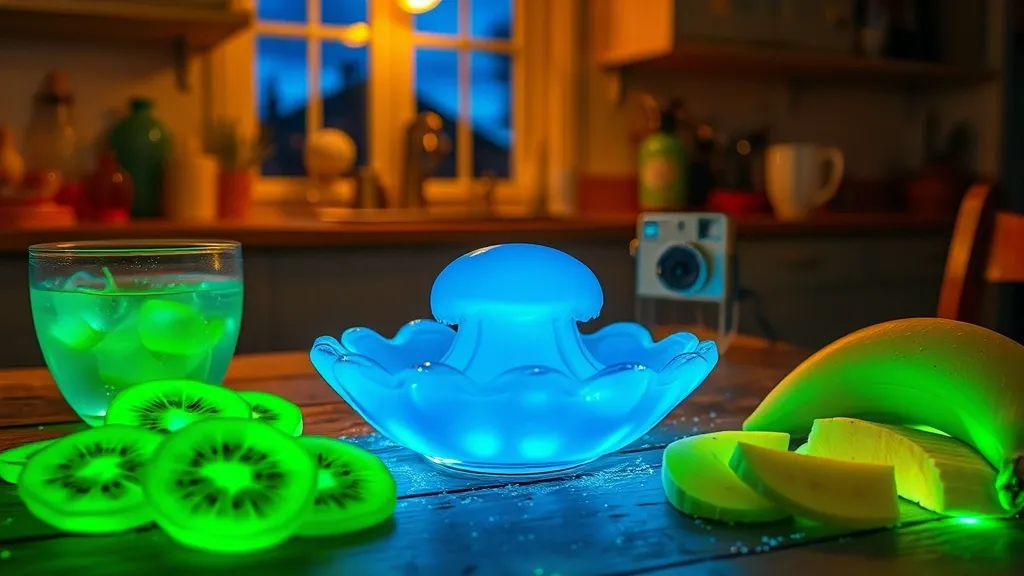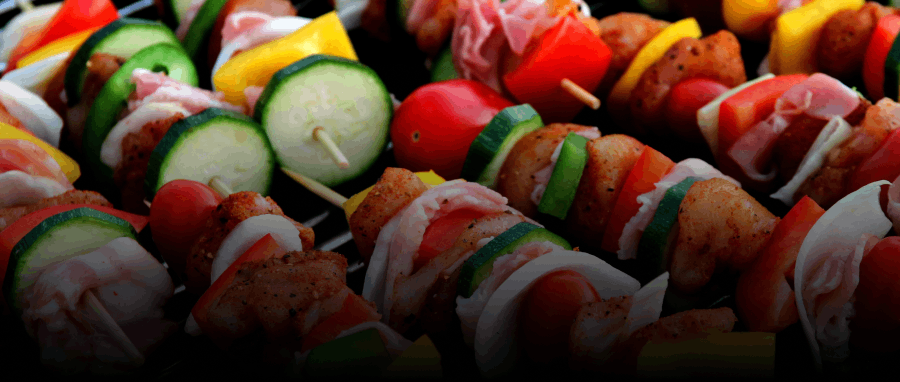When Nature Gets Groovy: The Science Behind Bioluminescence
Alright, let’s dive into this glowing wonder that’s all around us but we often overlook—bioluminescence. Sounds fancy, right? But it’s basically just nature’s way of throwing a cool light show without needing a power source. Think of it as the original glow stick, but way more sophisticated and a little less likely to ruin your party when it leaks.
So, what’s the deal with bioluminescence? It’s a natural phenomenon where certain organisms produce light. This isn’t some sci-fi movie magic; it’s real science at work! The magic happens thanks to a chemical reaction in their bodies, primarily involving a molecule called luciferin and an enzyme called luciferase. When they mix, boom! Light! Some creatures use it to attract mates, others to scare off predators, and a few just to be extra fabulous. Can you blame them?
- Fireflies: Those little guys light up your summer nights, making you feel like you’re in a romantic movie. But really, they’re just showing off to find a partner.
- Deep-sea creatures: Ever seen those pictures of glowing jellyfish or anglerfish? It’s like a rave down there, and we’re missing out on the dance party!
- Some fungi: Yep, you heard that right! There are mushrooms that glow in the dark, which makes wandering through a forest feel like you stepped into a fairy tale.
Now, let’s talk about why we should care about bioluminescence beyond just being amazed. First off, it’s a natural marvel that gets scientists excited. They’re looking at how these organisms can inspire new technology—like using bioluminescent genes in plants to help them glow in the dark. Imagine walking through your garden at night and your tulips are lighting your way. How cool would that be?
Plus, bioluminescence plays a role in ecosystems. It helps with communication, predation, and even camouflage. It’s like nature’s little survival hack. So next time you bite into one of those glowing foods, just remember there’s a whole magical world behind that glow. It’s not just pretty; it’s a testament to how clever and resourceful nature can be.
In short, bioluminescence is like nature’s way of saying, Hey, look at me! And honestly, who doesn’t love a little glow in their life? So keep an eye out for those glowing foods, and appreciate the science that makes them shine.
Meet the Glowing Stars of the Culinary World
Okay, so we all know that food is supposed to be delicious, right? But what if I told you there are some foods out there that aren’t just tasty but actually glow in the dark? I mean, how cool is that? It’s like having your very own edible fairy lights! Let’s dive into some of the most enchanting foods that light up your plate (and maybe your Instagram feed too).
- Jellyfish: Yep, you heard me! Certain types of jellyfish, especially the Aequorea victoria, glow due to a protein called GFP (green fluorescent protein). Now, I know what you’re thinking—jellyfish on a plate? But in some cultures, they’re considered a delicacy and can be served in salads or as a crunchy snack. Talk about a unique appetizer!
- Bioluminescent Algae: This one’s straight out of a sci-fi movie! Some algae can glow when disturbed, creating a beautiful blue light. While you can’t exactly sit down to a plate of algae, it’s often used in cocktails or as a garnish. Imagine sipping a drink that sparkles like the night sky. Fancy, huh?
- Edible Flowers: Flowers like the Evening Primrose or certain types of pansies can glow under UV light. They’re not only stunning but can add a pop of color to your dishes. Pro tip: They taste pretty good too! Just don’t try to substitute them for your salad greens.
- Glow-in-the-Dark Cake: This is where things get really fun! Some bakers use tonic water (which contains quinine that fluoresces) to create cakes that glow under black light. Kids (and let’s be real, adults too) go wild for this! Throw in a birthday party, some black lights, and you’ve got a recipe for a night to remember!
These foods not only bring a little magic to your meals but also spark some interesting conversations. Imagine telling your friends you had a glowing jellyfish salad for dinner! Just make sure they’re in the right mood for adventure. Who knows? You might just light up their dinner table in more ways than one.
So, if you’re looking to spice up your culinary experience or impress at your next dinner party, why not give one of these glowing goodies a try? They might just be the star of the show!
From Plate to Party: How to Use Glowing Foods
So, you’ve discovered some fantastic glowing foods—now what? It’s time to take these funky ingredients from your kitchen to the party scene! I mean, who doesn’t want to impress their friends with a dish that literally lights up the room? Let’s dive into how you can incorporate these vibrant foods into your next gathering.
First off, think about presentation. Glowing foods are like nature’s little party lights, so you wanna showcase them in a way that really pops. Imagine a salad filled with glowing radishes and crunchy cucumbers, all tossed together with a zesty dressing. You could serve it in a clear bowl, maybe even on a black tablecloth, to really let those colors shine. It’s like a mini rave on your dinner table! Plus, eating healthy never looked so cool.
- Glow-in-the-Dark Cocktails: Ever thought about making drinks that glow? Use tonic water (thanks to the quinine) as a base for your cocktails. Throw in some lemon or lime juice for that tartness, and voila! You’ve got a drink that’s not only refreshing but also glows under UV light. Just be careful; you don’t want your friends to think you’re trying to turn them into superheroes.
- Glowing Snacks: If you’re hosting a movie night, why not whip up some glowing popcorn? Just drizzle some melted coconut oil that’s been mixed with a bit of blue food coloring. It might not glow in the dark per se, but it’ll definitely make your popcorn stand out. It’s all about the vibes, right?
- Creative Desserts: For dessert, think about incorporating glowing jelly or even using glowing fruit like certain berries. A glowing fruit salad can be a showstopper! Just imagine the Instagram posts. You’ll be the talk of the town—until the next trend comes along, of course.
And hey, if you really wanna go all out, consider a themed party. Maybe a “Glow Party” where everyone dresses in white or neon colors! The glowing foods will be the cherry on top. Just be prepared for some epic photos and possibly some jealous friends who didn’t get the invite. Oops!
At the end of the day, using glowing foods is all about fun and creativity. Don’t stress about making everything perfect. Just enjoy the process, laugh a little, and be ready to create some unforgettable memories. Who knew food could be so exciting, right? So, go ahead and light up your next gathering! 🌟
A Bite of the Future: The Sustainability of Glow-in-the-Dark Cuisine
So, glow-in-the-dark food sounds like something straight outta a sci-fi movie, right? But believe it or not, it’s becoming a thing, and it’s not just for the Instagram likes (though, let’s be real, those pics would be fire). What’s even cooler is how this trend could lead us into a more sustainable future in the culinary world.
First off, let’s talk about the ingredients. Many glow-in-the-dark foods are made using bioluminescent organisms or natural compounds that can light up when exposed to certain conditions. Think about it: instead of relying on artificial colors or preservatives, we could be using nature’s own light show. That’s gotta be better for the planet, right? It’s like Mother Nature’s way of giving us a little wink while we chow down.
And it gets better! Some researchers are exploring how these glowing foods could help reduce food waste. You know how sometimes you’re hesitant to eat that leftover salad because you’re not sure if it’s still good? Imagine if that salad could glow when it’s fresh and then dim down when it’s time to toss it. I mean, who wouldn’t want a dinner that tells them when it’s time to dig in? It’s like having your own personal food assistant. “Hey, eat me now!”
- Bioluminescent ingredients could reduce reliance on synthetic additives.
- Glowing foods can enhance food safety by indicating freshness.
- It opens the door to innovative culinary practices that prioritize eco-friendliness.
Plus, think of the potential for urban farming! Imagine growing your own glowing veggies in a city where space is tight. These plants could thrive with less light and in smaller areas, which is perfect for those of us who can’t keep a cactus alive (guilty!).
Of course, we’re still in the early stages of this glow-in-the-dark revolution. There are challenges to tackle, like ensuring safety and scalability. But if we can nail it, we might just have a future where our meals aren’t just delicious but also light up our lives—literally! Who wouldn’t want to chow down on a glowing burger while watching the sunset?
As we dive deeper into this sparkling culinary adventure, it’s clear we’re at the beginning of something special. So, next time you see a glowing dish, just remember: it’s not just about the looks; it’s about the future of food, and it just might be brighter than we think!




